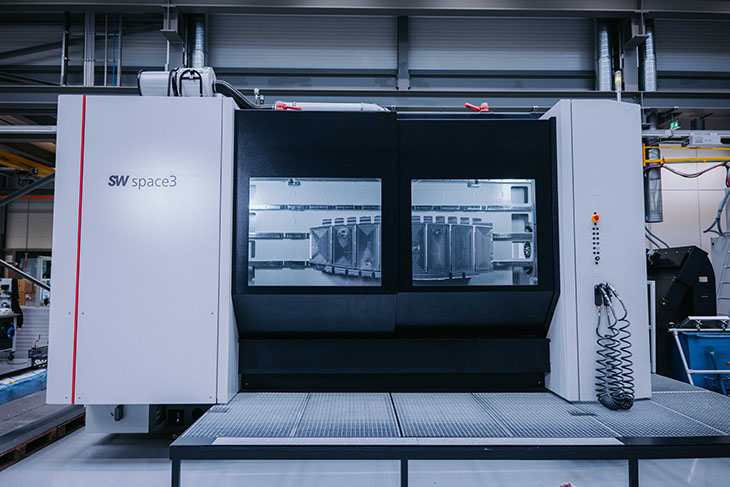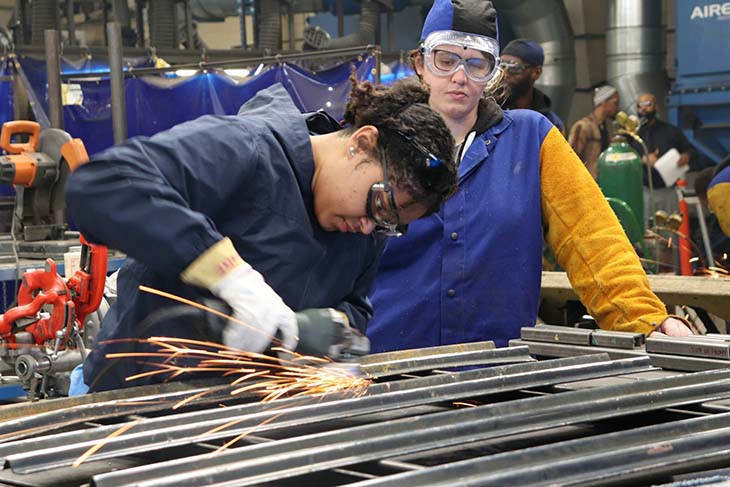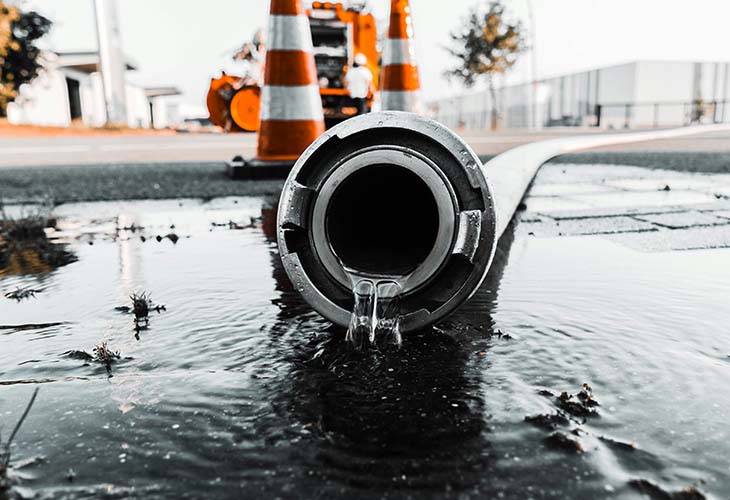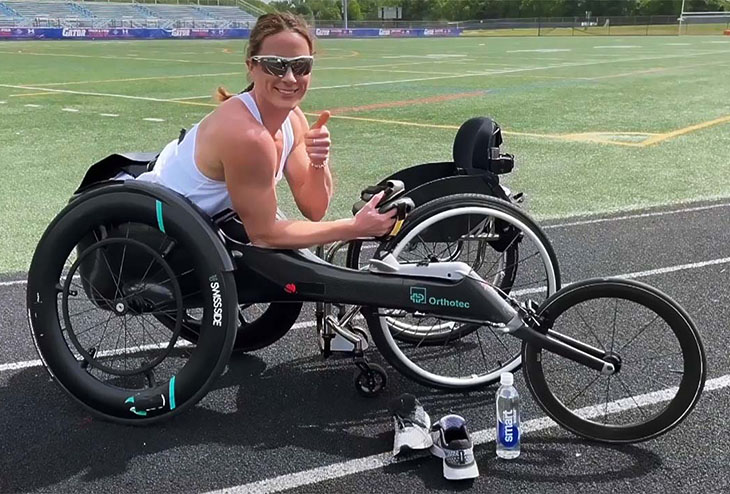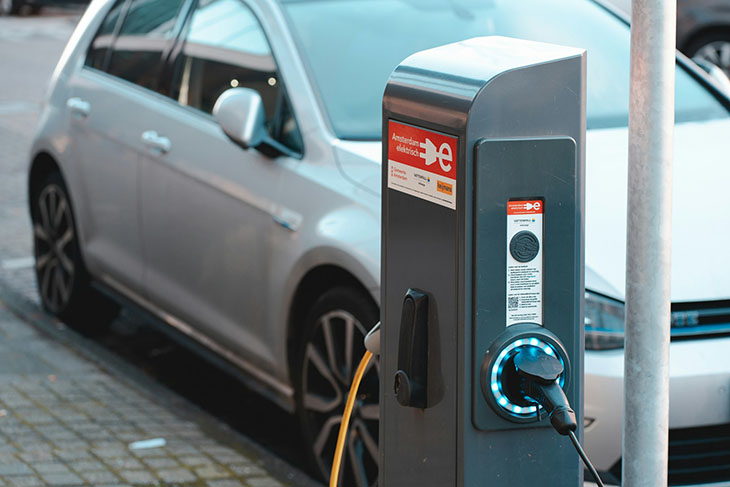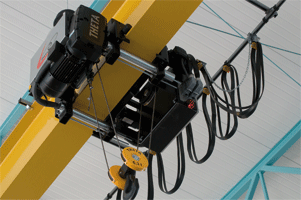Automatic foiling protects sensitive surfaces during processing.
Systems for the packaging of coils, small coils, slit strips and sheets have to meet different requirements depending on the material. The finishing formats as well as the number of pieces, their size, thickness and possible coating also play a role. They require, for example, particularly gentle handling of very sensitive surfaces, compliance with short set-up times, or the possibility of handling partial coils. In order to also be able to supply customers with smaller batch sizes individually in the future, the North Rhine-Westphalia-based WOLFGANG FISCHER STAHL GmbH installed a new cut-to-length line as part of the expansion of its steel service centre of the b+s group in December 2020. This allows the flexible production of flat and dimensional sheets in any number of pieces, which is not bound to the size of complete coils. Even different coating systems, for example for a wide range of colours, for surface protection or for storage and transport purposes, are no problem for the new, highly automated cut-to-length line.
“When expanding its machine park, FISCHER STAHL attached importance to being able to supply its customers with even smaller batch sizes than before, if required”, says Dr.-Ing. Lutz-Stefan Heinrich, managing director of Schnutz GmbH which belongs to the b+s group. “For this reason, it was clear from the outset that the new cut-to-length line had to be capable of processing partial coils.” Another decisive factor in the choice of the b+s group cut-to-length line was the gentle treatment of coated or pre-painted material surfaces, which is ensured by a special foiling system upstream and corresponding intermediate rollers within the high-performance levelling machines. A flying, high-precision slide shear also minimises the cutting tolerance.
Processing of partial coils and different thicknesses possible
From a coil store with three places, a coil lift truck feeds the decoiler with coils of up to 15 t mass, which can be uncoiled either from above or below. If there is an intermediate paper layer in the coil, it can be removed cleanly by means of a corresponding rewinder and finally disposed of. Furthermore, it is possible to rewind coils that are only to be partially processed. The coil lift truck finally returns these partial coils to the coil store, where they are automatically weighed. “In this way FISCHER STAHL can also assemble small batch sizes and still always knows exactly what quantities are being returned to the coil warehouse,” Heinrich explains.
A jig integrated into the infeed group also helps to ensure that the cut-to-length line can flexibly handle a wide range of materials. This is because it eliminates coil curvature, especially of thick starting material, so that the line can process strips in the entire range of only 0.5 to 5.0 mm thickness without any problems. In order to optimally cover the material thickness range in the entire processing sequence, FISCHER STAHL also decided on a solution with two integrated high-performance levelling machines from Schnutz GmbH, which are arranged directly behind each other. Thanks to the levelling rollers with diameters of 70 and 45 mm respectively, excellent levelling results can be achieved, which enable precise further processing. Both sets of rollers are installed in a compact cassette that can be easily removed from the levellers for maintenance purposes.
Optimised cutting quality and protection of sensitive surfaces
“Different materials require varying settings of the so-called tilt, with which the metal is deformed in the infeed area of the leveller,” says Heinrich. “That’s why both levellers have a special tilt adjustment system that is able to compensate for various pre-deformations.” The adjustment takes place positively along precisely manufactured curved sections and is characterised by its special rigidity. This ensures that the upper and lower levelling rollers are precisely aligned over the entire infeed range. In order to eliminate edge and centre waves in a targeted manner, the supports of the levelling rollers in both machines can also be individually adjusted in vertical direction. The high cutting quality of the b+s cut-to-length line is also ensured by the trimming shear placed behind the infeed group. Thanks to the precise bearing of the cutter shafts, an absolutely burr-free cut is possible, whereby the cutting gap is adjusted by axially moving the upper cutter shaft. The edge scrap of the belt, which can be trimmed on both sides up to 30 mm, is shredded by a special scrap cutter, which can be adjusted to the different material thicknesses by means of an electromotive cutting air adjustment.
In order to be able to process coated and surface-sensitive coils without any problems, there is a foil insertion device in front of the two high-performance levellers. With their help, the upper side of the belt can already be foiled before levelling and thus protected in the further process. The levellers themselves also have special intermediate rollers that support the integrity of the surfaces during the levelling process. Finally, behind them is a flying carriage shear whose use does not require an additional loop pit. “The high-precision shear control developed by b+s AUTOMATION GmbH makes it possible to maintain low shape tolerances of the sheets at the specified belt speeds,” adds Heinrich. At the end of the cut-to-length line, a BURGHARDT + SCHMIDT GmbH swing-arm stacking machine ensures that sensitive material surfaces are treated particularly gently right through to the final processing steps. It has two stacking positions, which can also be used together for long sheets. All stops in the stacking area are moved electrically so that no damage to the belt edges has to be accepted during destacking.
Energy efficiency, high automation and easy maintenance
The hydraulic functions of the cut-to-length line are supplied with the necessary pressure and volume flow from a central power unit, with all machine groups each having their own valve blocks. For this purpose, the main drives are equipped with DC intermediate circuits via frequency converters, which enable energy exchange between the components: As soon as a drive is running generatively, it feeds energy into the DC link, which is then available to the other units. In this way, a high degree of energy efficiency can be achieved for the running system. The electrical components are housed together in a walk-in and air-conditioned control cabinet container so that maintenance can be carried out easily and comfortably.
The entire cut-to-length line can be controlled from one main control panel. There are screens on which all areas of the system can be viewed; in addition, two auxiliary control panels are available. The automation also has an interface to Level 3, so that a fully automatic transfer of the production data and a presetting of the system to the products are possible. The finished products are reported back to the customer’s PPS after processing in the cut-to-length line. “When developing the system, we attached great importance to relieving the operators as much as possible,” Heinrich explains in conclusion. “Should problems ever arise, the automation also allows full remote access by b+s Service Center.”
Further information on the Internet: www.fischerstahl.de, www.b-s-germany.de, www.schnutz.com and www.deltatechnik.com











